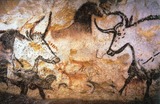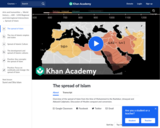
Paleolithic Art
- Subject:
- Art History
- Material Type:
- Lesson
- Author:
- Amy Marshman
- Date Added:
- 02/15/2023

Paleolithic Art

Tissues and cells of root, stem, and leaf anatomy in both dicots and monocots are investigated in this learning activity. Discussion, along with drawings, specimens, and visualizations, are used to help participants understand the differences between dicot and monocot anatomy, particularly in roots, stems, and leaves.

Plant water relations are presented in this learning activity to help participants understand the components of water potential, explain how water moves through plants, provide examples of plant adaptations to water stress, and have a general understanding of how water potential can be measured.

Powerpoint presentation on pneumatics and air brake systems. Links to YouTube videos.

A compilation of nearly 350 brief video clips, together with a complete Portuguese transcription and English translation of native speakers of Portuguese from various locations throughout Brazil (and some Portugal) who talk about 80 different topics.
The twelve lessons for SOWK 621.01: Research I: Basic Research Methodology as previously taught by Dr. Matthew DeCarlo at Radford University. Dr. DeCarlo and his team developed a complete package of materials that includes a textbook, ancillary materials, and a student workbook as part of a VIVA Open Course Grant.

Powerpoint presentation on preventive maintenance inspection (PMI).

14. Brave New World: Privacy, Data Sharing and Evidence Based Policy Making
The trifecta of globalization, urbanization and digitization have created new opportunities and challenges across our nation, cities, boroughs and urban centers. Cities in particular are in a unique position at the center of commerce and technology becoming hubs for innovation and practical application of emerging technology. In this rapidly changing 24/7 digitized world, governments are leveraging innovation and technology to become more effective, efficient, transparent and to be able to better plan for and anticipate the needs of its citizens, businesses and community organizations. This class will provide the framework for how cities and communities can become smarter and more accessible with technology and more connected.

This is as online text that can be used to teach Accountants' Ethics and Professional Responsibility course in California.

Redhotjazz.com was a crown jewel of the early internet. Starting in the mid ’90s it made the offline discographies and biographies of early jazz available to the online public. It also hosted thousands of audio files donated by people who were digitizing their 78 RPM record collections, making many obscure recordings available for the first time. This all started long before Youtube and even before Wikipedia was much more than an idea.
We are duplicating the content of the Red Hot Jazz Archive from a snapshot saved in Archive.org’s Wayback Machine. Keeping with both the original intent and mission of Redhotjazz.org everything will be publicly available outside of our paywall. For ease of use we are improving each entry to meet the norms of the phone friendly modern internet.

11. Emerging Technologies: An Introduction to Cryptocurrency
The trifecta of globalization, urbanization and digitization have created new opportunities and challenges across our nation, cities, boroughs and urban centers. Cities are in a unique position at the center of commerce and technology becoming hubs for innovation and practical application of emerging technology. In this rapidly changing 24/7 digitized world, city governments worldwide are leveraging innovation and technology to become more effective, efficient, transparent and to be able to better plan for and anticipate the needs of its citizens, businesses and community organizations. This class will provide the framework for how cities and communities can become smarter and more accessible with technology and more connected.

An introduction to Shinto, one of Japan's earliest belief systems. Created by Asian Art Museum.

An overview of the founding of the Sikh religion started by Guru Nanak. Discussion of persecution by the Mughals and militarization by Gurus Har Gobind, Teg Bahadur and Gobind Singh. Overview of Khalsa.

Welcome to Spanish Grammar in Context, where you will find detailed grammar explanations of the Spanish language. Unlike traditional reference grammars, each topic is explained using authentic video examples from the Spanish in Texas project. Accompanying practice quizzes are available on an open Canvas course site.

The SpinTX video archive provides a convenient web interface to search hundreds of short video clips from the Spanish in Texas Corpus. The collection includes hundreds of video clips culled from interviews of native and heritage speakers of Spanish living in Texas. Each video is accompanied by synchronized closed captions and a transcript that has been annotated with thematic, grammatical, functional and metalinguistic information. All materials available on the site can be freely used, copied, and distributed under a Creative Commons license.

Overview of the spread of Islam from the time of Muhammed to the Rashidun, Umayyad and Abbasid Caliphates. Discussion of Muslim conquest and conversion.

An introduction to the Sunni and Shia schism that forms in Islam after the death of Muhammed.

As Ali becomes caliph, the Ummayads under the leadership of Muawiya refuse to recognize him, sparking the first Muslim Civil War. The increased division leads eventually to the Tragedy at Karbala which is a defining event for Shia Muslims.

An introduction to the major schools of Buddhist thought--Theravada Buddhism and Mahayana Buddhism.

One of the greatest areas of potential for open educational resources (OER) is the opportunity for improved representation and coverage of identities that often go erased or poorly addressed in educational materials. Information about, by, and for trans and gender diverse people is one such topic. With knowledge and intention, those involved in the creation, adaptation, and use of OER can find and incorporate materials that center trans and gender diverse people. Doing this is essential for supporting trans and gender diverse students and educating everyone about these identities. This resource is a guide on how to make OER more inclusive and representative of trans and gender diverse people. It is intended to be easily incorporated into a scholarly communications course, while also being valuable to faculty and others interested in learning about the topic and how to make changes to their own course materials.